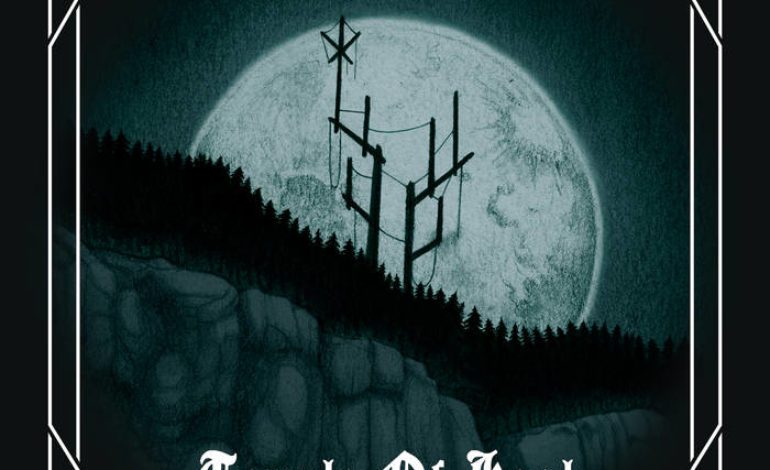

Black Sabbath fan boys deliver the expected
Temple of Haal, the newest album by Swedish metal trio Nekromant, plays out like the secret soundtrack to the movie Midsommar. It is a beautiful piece of musicianship, but it lacks depth and originality both lyrically and in musical composition. Often referred to as a modern Black Sabbath, Nekromant imitates the classic heavy metal sound without adding much more than tight production value.
Said to be inspired by Nekromant’s hometown of Vargön, Temple of Haal juxtaposes the serene Swedish landscape with hard, unorganized mythological imagery. Guitarist Adam Lundqvist stated in an interview with Metal1.info that the name Haal in the album’s title is a reference to Halleberg, one of the twin mountains in their hometown. A more sinister version of Halleberg was reimagined for the album’s cover.
Each song on the album stands alone, and there seems to be no overarching theme or concept tying the album together besides the fantastical ramblings of someone who’s watched too much Lord of the Rings. However, Sweden’s long dark winters seem to have given this trio plenty of time to solidify their musical style. Their riffs are effortlessly shredded, and their sound is surprisingly full to only be comprised of three people. But, generic to the genre, they tend to use a lot of repetitive lines, which seems to elongate already lengthy tracks such as “Olórin’s Song” and “King Serpent.” In conjunction with their utilization of driving and minimally changing musical phrasing, it’s easy to place the majority of Temple of Haal into the category of background music.
The title track, “Temple of Haal,” displays their outdated heavy metal style. It has a steady beat and experiments with cut time which only seems to make the song drag instead of adding its intended emphasis. There is no modulation or melodic variation, so the music seems to never arrive anywhere, consistently staying on the same plane. The vocals sound a bit thin and strained, especially on the lyrical notes on the bridge “I see this place top of the mountain side.” The song incorporates an extended guitar solo to break up the monotony of the steady drive, but the actual framework of the overall melody is pretty standard. If this track was about one minute shorter, it might be easier to appreciate.
The best track on this album is “The Woods.” If “The Woods” was a television show, it would be worthy of its own spin-off series. It is big, driving and it has a feel that is distinctive from the rest of the album. Most importantly, it has many differentiating sections that keep the listener engaged as well as the easily identifiable triplet chant, “Lead me to my final haven, build me an altar of death,” that would gain the buy-in of even the most detached concert attendee.
Nekromant worked with a new label, Despotz Records, to create Temple of Haal. The result was a sharper production value that doesn’t quite match up with their current style. On the upside, this new production standard has a chance to slowly move Nekromant away from their traditional heavy metal style and lay the foundation for a more electronic, post-hardcore sound. Temple of Haal is not a standout album, but in combination with their cult following and positive social media presence, it is certainly moving them up in a festival lineup. It will be interesting to see what else they will accomplish in collaboration with Despotz Records. The talent is there. It’s just time for further exploration. Hopefully, Nekromant will venture further into “The Woods” and come out ready to embrace their full potential.
